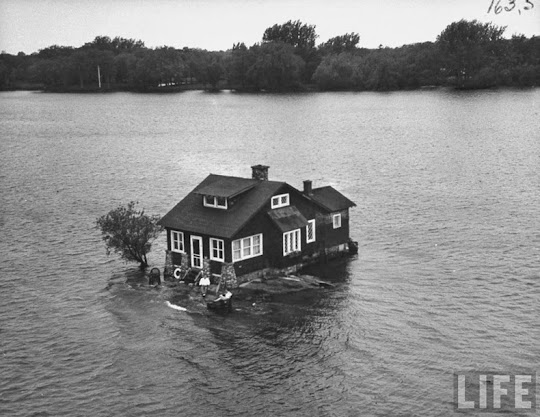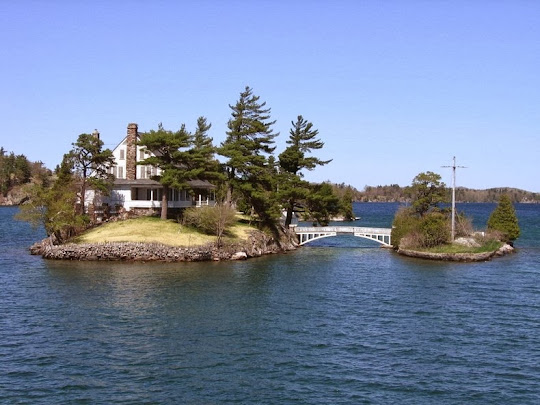The Indonesian volcano Sinabung was dormant until pretty recently. In 2010 it kicked into action, but in January 2014, it switched to high gear, blasting out massive amounts of ash high into the atmosphere (see picture below). Then a lava dome collapse on Feb. 1 created a pyroclastic flow, a rapid wave of hot gas and rock that thundered downslope.

Towering twisters of ash spawned by a pyroclastic flow from a volcano explosion, because why not.
These flows are incredibly dangerous (15 people were killed by Sinabung’s flows when they ventured inside the 5-kilometer exclusion zone) and are for my money one of the most terrifying events on Earth. And now we find out they can create tornado-like vortices! And they’ve been caught on camera. Here is some video of the flow, which cuts to the towering funnels about a minute in:
Now technically these aren’t tornadoes, even if they look like it. Tornadoes are when a funnel cloud is connected to the ground at its bottom and the base of a cumulonimbus cloud at its top. They form from the top down, dropping from the cloud base.
In this case, though, the phenomena are built from the ground up. The pyroclastic flow heats the air over the ground, causing it to rise. Air from the sides then rushes in to fill the partial vacuum. This creates swirls, eddies of turbulence, which can get amplified into the vortices seen in the video (and also in fire tornadoes which are also seriously a thing). This makes these events more like a dust devil than proper tornadoes. Or, we suppose, an ash devil. But still, yeesh.

The Sinabung volcano started erupting violently again in January 2014. This shot, from Jan. 7, shows the huge ash plume blasting into the sky.
Sinabung’s eruption has been very dangerous and has caused the evacuation of over 30,000 people from nearby villages. When we saw the picture above of one of the eruptions, our instinct was to curl up into a tight little ball and scream into my own belly. Remember, that’s not just smoke you’re seeing; it’s vaporized rock, millions of tons of it! And it’s superheated to glowing, which can then flow downhill at hundreds of kilometers per hour, laying waste to whatever it touches.
Like we said, terrifying. Amazingly, though, volcanologists are getting better at predicting these. Magma moving underground can cause tremors that indicate an explosive eruption is imminent, allowing people to be evacuated. We can’t save everyone from volcanoes—they’re ubiquitous, and sometimes very close to dense population centers—but science is letting us understand what happens deep underground, which then informs us of what might happen closer to home.
There is a terrible beauty to volcano eruptions (much like hurricanes seen from space) that belies their destructive power. But one of the beauties of science is that it gives us the potential to save lives, and cut that threat down.
Source
READ MORE»
Towering twisters of ash spawned by a pyroclastic flow from a volcano explosion, because why not.
These flows are incredibly dangerous (15 people were killed by Sinabung’s flows when they ventured inside the 5-kilometer exclusion zone) and are for my money one of the most terrifying events on Earth. And now we find out they can create tornado-like vortices! And they’ve been caught on camera. Here is some video of the flow, which cuts to the towering funnels about a minute in:
Now technically these aren’t tornadoes, even if they look like it. Tornadoes are when a funnel cloud is connected to the ground at its bottom and the base of a cumulonimbus cloud at its top. They form from the top down, dropping from the cloud base.
In this case, though, the phenomena are built from the ground up. The pyroclastic flow heats the air over the ground, causing it to rise. Air from the sides then rushes in to fill the partial vacuum. This creates swirls, eddies of turbulence, which can get amplified into the vortices seen in the video (and also in fire tornadoes which are also seriously a thing). This makes these events more like a dust devil than proper tornadoes. Or, we suppose, an ash devil. But still, yeesh.

The Sinabung volcano started erupting violently again in January 2014. This shot, from Jan. 7, shows the huge ash plume blasting into the sky.
Sinabung’s eruption has been very dangerous and has caused the evacuation of over 30,000 people from nearby villages. When we saw the picture above of one of the eruptions, our instinct was to curl up into a tight little ball and scream into my own belly. Remember, that’s not just smoke you’re seeing; it’s vaporized rock, millions of tons of it! And it’s superheated to glowing, which can then flow downhill at hundreds of kilometers per hour, laying waste to whatever it touches.
Like we said, terrifying. Amazingly, though, volcanologists are getting better at predicting these. Magma moving underground can cause tremors that indicate an explosive eruption is imminent, allowing people to be evacuated. We can’t save everyone from volcanoes—they’re ubiquitous, and sometimes very close to dense population centers—but science is letting us understand what happens deep underground, which then informs us of what might happen closer to home.
There is a terrible beauty to volcano eruptions (much like hurricanes seen from space) that belies their destructive power. But one of the beauties of science is that it gives us the potential to save lives, and cut that threat down.
Source




















